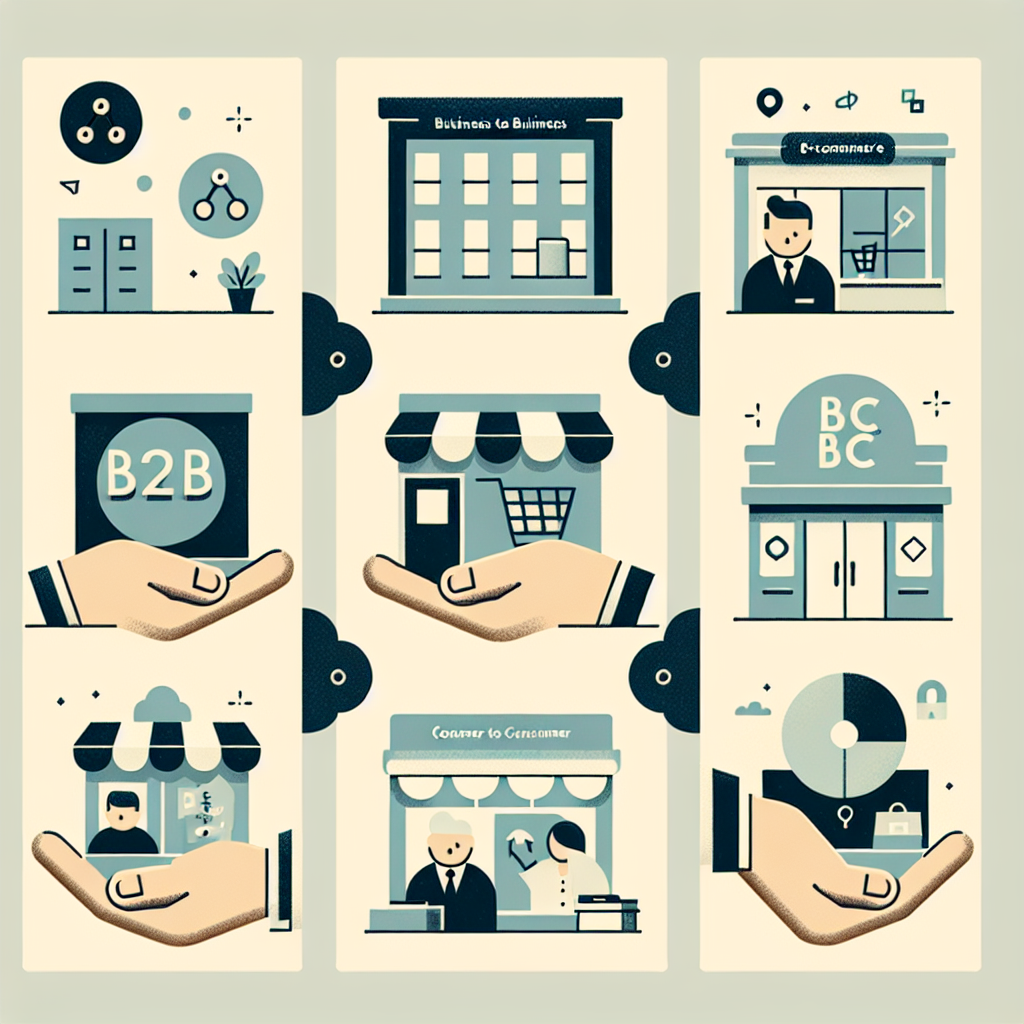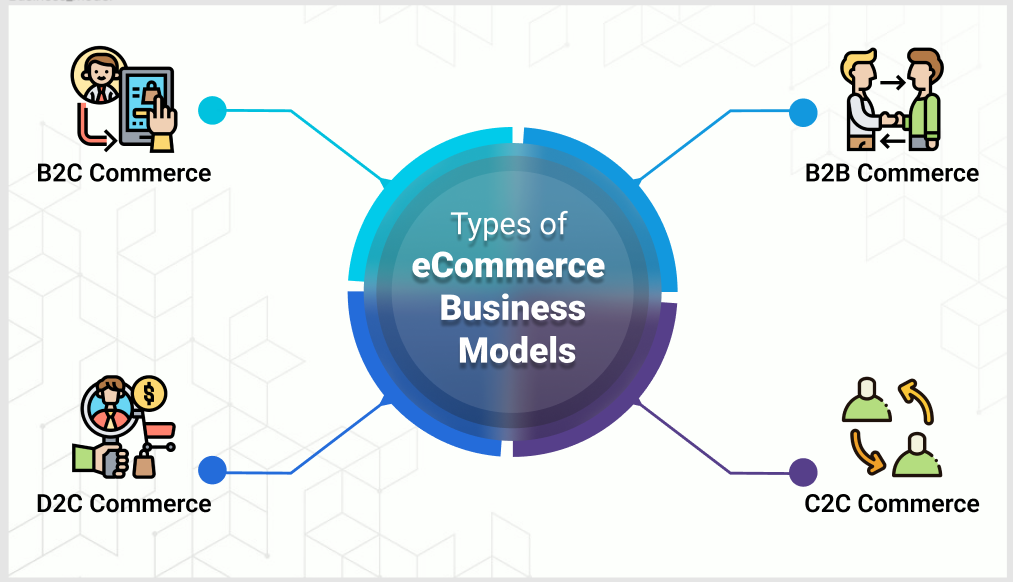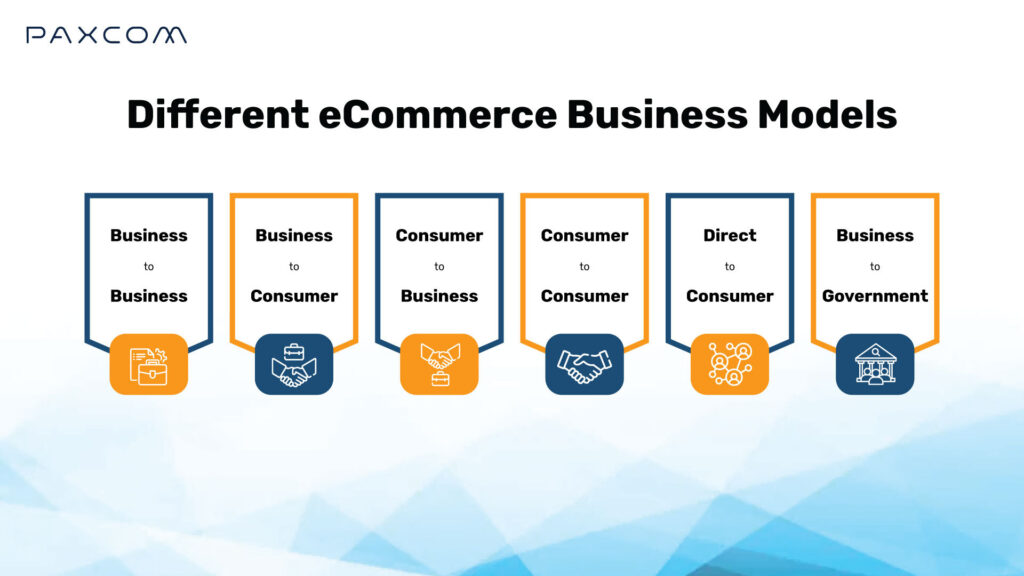Discover the various types of ecommerce models and find out which one is the perfect fit for your business today!

Image courtesy of via DALL-E 3
Table of Contents
Introduction to Ecommerce
Welcome to the world of ecommerce! Have you ever bought a toy or a book online? That’s ecommerce in action! Ecommerce, short for electronic commerce, is all about buying and selling things over the internet. It’s just like going to a store, but you do it from the comfort of your own home using your computer or even your phone. Let’s dive into what ecommerce is all about and why it’s so popular.
What is Ecommerce?
Ecommerce is like having a virtual shopping mall right at your fingertips. You can browse through different products, compare prices, and make purchases without ever leaving your house. It’s a super convenient way to shop for everything from clothes to gadgets to even food! Basically, if you can buy it in a store, chances are you can also buy it online through ecommerce.
Why is Ecommerce Popular?
Ecommerce has become a hit because it’s so easy and convenient. Instead of hopping from store to store, you can find everything you need with just a few clicks. Plus, you can shop anytime, day or night, and have your items delivered right to your doorstep. No more long lines or crowded malls – just simple, hassle-free shopping at your fingertips.
Types of Ecommerce Models
When it comes to online business, there are different types of ecommerce models that companies can choose from based on their target customers and products. Let’s take a look at the main models:
Business to Business (B2B)
In the B2B model, businesses sell products or services to other businesses. For example, a company that manufactures office supplies may sell their products to other businesses that need them for their operations.
Business to Consumer (B2C)
B2C is all about businesses selling directly to consumers. Think of buying a book from an online bookstore – that’s a classic example of B2C ecommerce.
Consumer to Consumer (C2C)
C2C involves consumers selling products or services to other consumers. An example would be selling a toy to a friend through an online marketplace platform.
Business to Government (B2G)
Under the B2G model, businesses can sell their products or services to government agencies. For instance, a company that provides school supplies may have contracts with local schools to supply them with the necessary materials.
Identifying Your Business Needs
Before you dive into the world of ecommerce, it’s important to understand who your customers are. Are they other businesses looking for specific products or services, or are they individual consumers browsing for personal use? Knowing your customer base will help you choose the right ecommerce model that caters to their needs.

Image courtesy of via Google Images
Knowing Your Product
Another crucial aspect to consider when identifying your business needs is the type of product you are selling. Is it a physical product that requires shipping, or is it a digital product that can be instantly downloaded? The nature of your product will influence the logistics of your ecommerce business and impact the best model for your operations.
Choosing the Right Ecommerce Model
When it comes to setting up an online business, choosing the right ecommerce model is crucial for its success. Your choice will depend on your business goals and needs. Here’s a guide to help you select the best fit for your online venture.
Matching Business Goals with Models
Firstly, it’s essential to align your business goals with the right ecommerce model. If your aim is to reach a larger audience and sell directly to consumers, then a Business to Consumer (B2C) model would be suitable. On the other hand, if your goal is to establish strong partnerships with other businesses, then a Business to Business (B2B) model might be the way to go. Understanding what you want to achieve will help you narrow down your options.
Scalability and Growth
Another key factor to consider is scalability. You want to choose an ecommerce model that can grow with your business. If you anticipate rapid expansion in the future, opt for a model that can accommodate this growth seamlessly. Being able to scale your operations as your business flourishes is essential for long-term success.
Benefits of Each Ecommerce Model
B2B Benefits
Business to Business (B2B) ecommerce models offer various advantages for companies looking to sell products or services to other businesses. One significant benefit is the potential for larger orders, meaning more significant sales volumes and revenue. B2B transactions often involve long-term contracts, providing companies with a stable and predictable income stream. Additionally, B2B relationships tend to foster trust and loyalty between businesses, leading to potential repeat business and ongoing partnerships.
B2C Benefits
Business to Consumer (B2C) ecommerce models cater directly to individual consumers, offering several advantages for businesses. By choosing a B2C model, companies can reach a wider audience of potential customers, expanding their market reach beyond local boundaries. B2C transactions typically result in quicker sales cycles compared to B2B or C2C models, allowing businesses to generate revenue more rapidly. Furthermore, B2C models enable companies to establish direct relationships with their end-users, fostering brand loyalty and customer satisfaction.
C2C Benefits
Consumer to Consumer (C2C) ecommerce models facilitate transactions between individual consumers, presenting unique benefits for sellers and buyers alike. One significant advantage of C2C platforms is the opportunity for personal selling, allowing individuals to interact directly with potential buyers to negotiate prices and terms. By eliminating intermediaries, C2C transactions often result in lower costs for both sellers and buyers, enabling more competitive pricing. Additionally, C2C models promote a sense of community and trust among participants, fostering a supportive environment for buying and selling.
B2G Benefits
Business to Government (B2G) ecommerce models involve selling products or services to government entities, offering specific advantages for businesses targeting this customer segment. One key benefit of B2G transactions is the stable demand for goods and services, as government agencies often require ongoing supplies for operations. B2G relationships also provide businesses with reliable payment terms, reducing the risk of financial uncertainties associated with other types of transactions. Furthermore, engaging in B2G commerce can enhance a company’s credibility and reputation, opening up opportunities for future government contracts and partnerships.
Challenges of Each Ecommerce Model
Business to Business (B2B) ecommerce comes with its own set of challenges. One of the main challenges is longer sales cycles. This means that the time it takes from contacting a potential business customer to closing a deal and receiving payment can be extended. Additionally, B2B transactions tend to be more complex compared to selling directly to consumers. Businesses may require customized solutions, negotiations, and extensive contract agreements, which can make the sales process more challenging.

Image courtesy of via Google Images
B2C Challenges
When it comes to Business to Consumer (B2C) ecommerce, businesses face challenges such as heavy competition. With numerous online stores vying for consumers’ attention, standing out and attracting customers can be tough. Moreover, B2C businesses often need to meet high customer service demands. This includes handling inquiries, resolving complaints, and ensuring a smooth shopping experience to retain customers and build loyalty.
C2C Challenges
Consumer to Consumer (C2C) ecommerce has its own set of challenges, including trust issues. Since transactions occur between individual consumers, establishing trust between buyers and sellers can be challenging. Additionally, market saturation is a common issue in C2C platforms where many sellers offer similar products or services, making it harder for individual sellers to differentiate themselves and attract buyers.
B2G Challenges
Business to Government (B2G) ecommerce presents challenges such as strict regulations. Selling to government agencies often involves compliance with various rules, regulations, and procurement processes, which can be complex and time-consuming. Moreover, B2G transactions may undergo long approval processes due to the formalities associated with government contracts, leading to delays in finalizing deals.
Tools and Platforms for Ecommerce
When it comes to running an ecommerce business, utilizing the right tools and platforms can make a significant difference in its success. Let’s explore some popular options that can help streamline your online operations.
Online Marketplaces
Online marketplaces are platforms where sellers can list their products for potential buyers. These marketplaces provide a vast audience and infrastructure for handling transactions. Examples of popular online marketplaces include Amazon and eBay. By utilizing these platforms, sellers can reach a wider audience and benefit from the built-in traffic these sites attract.
Ecommerce Platforms
Ecommerce platforms like Shopify and WooCommerce offer solutions for creating and managing online stores. These platforms provide customizable templates, secure payment gateways, inventory management tools, and more. With user-friendly interfaces, even those with minimal technical skills can easily set up an online store. Ecommerce platforms help simplify the process of selling products online, allowing businesses to focus on growth and customer satisfaction.
Setting Up Your Ecommerce Business
Before diving into the world of ecommerce, it is essential to have a well-thought-out business plan. A business plan is like a roadmap that guides your journey in setting up and running your online business. It should include details such as your target customers, the products you plan to sell, your budget, marketing strategies, and goals for your business.
Image courtesy of via Google Images
Building Your Online Store
Once you have a solid business plan in place, the next step is to build your online store. There are various tools and platforms available that can help you set up your store quickly and efficiently. Platforms like Shopify, WooCommerce, and BigCommerce offer user-friendly interfaces and customizable templates to create a professional-looking online store.
Marketing Your Products
After your online store is up and running, the next crucial step is to market your products effectively. Marketing plays a vital role in attracting customers to your store and increasing sales. Some simple tips for marketing your products online include using social media platforms to promote your products, optimizing your website for search engines, and running targeted advertising campaigns.
Summary and Conclusion
This blog post provided a comprehensive overview of different types of ecommerce models, helping you understand which one suits your business best. Let’s recap the key points discussed:
Recap of Ecommerce Models
We learned about various ecommerce models like Business to Business (B2B), Business to Consumer (B2C), Consumer to Consumer (C2C), and Business to Government (B2G). Each model has its unique features, benefits, and challenges.
Choosing the right ecommerce model for your business requires matching your business goals with the suitable model and considering factors like customer base and product type. It’s crucial to select a model that can scale and grow with your business to maximize success.
Additionally, we explored the benefits and challenges associated with each ecommerce model. Understanding these aspects will help you make informed decisions and navigate potential obstacles effectively.
By following the steps outlined for setting up your ecommerce business, including creating a business plan, building your online store, and effectively marketing your products, you can embark on a successful ecommerce journey.
Remember, whether you’re a small business or a budding entrepreneur, choosing the right ecommerce model tailored to your specific needs and goals is essential for achieving success in the online marketplace.
Want to turn these SEO insights into real results? Seorocket is an all-in-one AI SEO solution that uses the power of AI to analyze your competition and craft high-ranking content.
Seorocket offers a suite of powerful tools, including a Keyword Researcher to find the most profitable keywords, an AI Writer to generate unique and Google-friendly content, and an Automatic Publisher to schedule and publish your content directly to your website. Plus, you’ll get real-time performance tracking so you can see exactly what’s working and make adjustments as needed.
Stop just reading about SEO – take action with Seorocket and skyrocket your search rankings today. Sign up for a free trial and see the difference Seorocket can make for your website!
Frequently Asked Questions (FAQs)
What is the best ecommerce model for small businesses?
For small businesses, the Business to Consumer (B2C) model is often the best choice. This model allows small businesses to sell directly to individual customers online, reaching a wider audience and generating sales more quickly. By focusing on selling products or services directly to consumers, small businesses can build brand awareness and establish a loyal customer base.
Can I use more than one ecommerce model?
Yes, you can definitely use more than one ecommerce model depending on your business needs. In some cases, using a combination of models like Business to Business (B2B) and Business to Consumer (B2C) can be beneficial. For instance, if your business sells products to other businesses but also wants to reach individual consumers, using both models can help you diversify your customer base and increase your revenue streams.
How can I start selling online quickly?
To start selling online quickly, you can follow these simple steps:
- Create an account on an online marketplace like Amazon or eBay.
- Upload your product listings with clear descriptions and attractive images.
- Set up a payment method to receive payments from customers.
- Ship your products to customers once orders are placed.
By following these steps, you can quickly start selling your products online and reach a wider audience.







